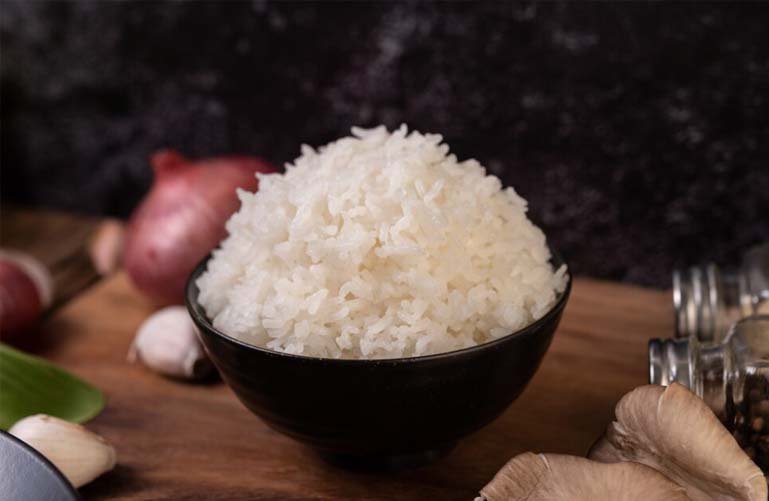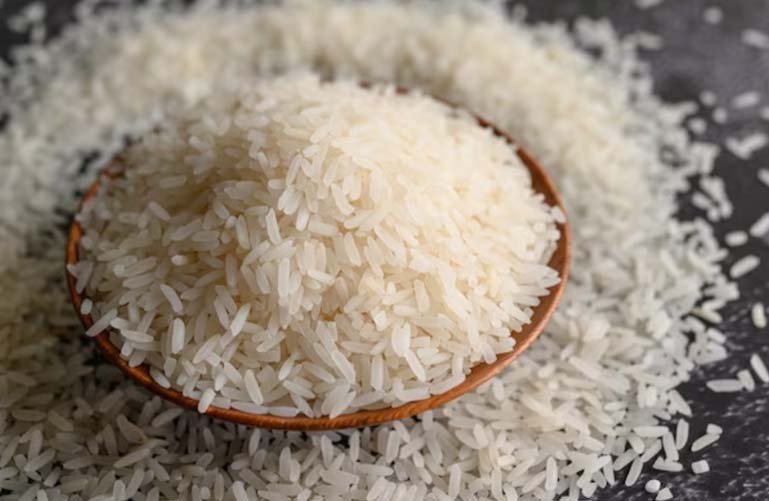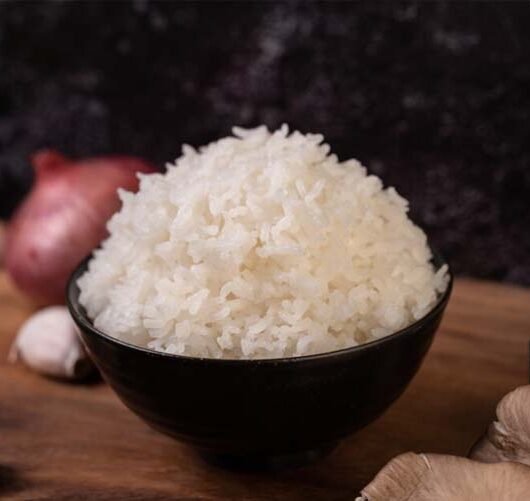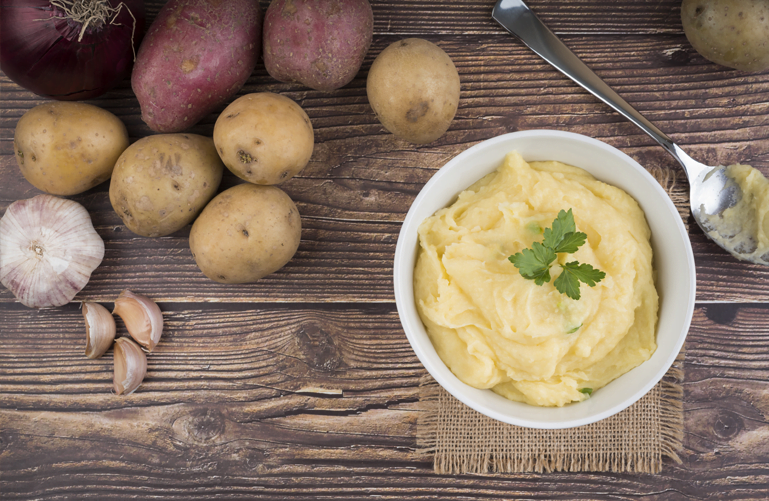The perfect white rice is achieved through a careful cooking process that ensures loose and tender grains, without clumping.
Start by washing the rice to remove excess starch. Cook in boiling water in a 1:2 ratio of rice to water. Salt is optional.
Reduce the heat, cover, and let simmer. After 18-20 minutes, remove from heat and let it rest.
Fluff with a fork to separate the grains. This versatile side dish complements a variety of dishes with its fluffy texture and delicate flavor.

White rice and health benefits
White rice, consumed in moderation and as part of a balanced diet, can offer several health benefits:
- Power source: White rice is an excellent source of complex carbohydrates, which provide sustained energy for the body.
- Low fat and cholesterol free: White rice is naturally low in saturated fat and contains no cholesterol, making it a healthy option for those looking to control their fat intake.
- Without gluten: For people with gluten intolerance or celiac disease, white rice is a safe and nutritious option.
- Low in sodium: If cooked without adding much salt, white rice can help keep dietary sodium levels low, which can be beneficial for cardiovascular health and blood pressure.
- easy to digest: White rice is gentle on the stomach and easy to digest, making it a good choice for people with digestive issues or an upset stomach.
- Versatile: White rice can be combined with a variety of foods and seasonings, making it a versatile food that suits different tastes and culinary preferences.
- Nutrient source: Although white rice lacks some vitamins and minerals found in more brown rice varieties, it still provides nutrients such as iron, zinc, and some B vitamins.
It is important to remember that excessive consumption of white rice, as with any food, can contribute to weight gain or other health problems if not consumed in moderation.

History of White Rice
The history of white rice is intrinsically linked to the history of rice in general, as white rice is simply hulled and polished rice, meaning that the husk and bran have been removed.
Rice itself is one of the oldest and most widely cultivated crops in the world. Rice is believed to have been first domesticated about 10,000 years ago in Southeast Asia, possibly in the region that is now China. From there, it spread across Asia and eventually reached other parts of the world through trade and migration.
Rice has been cultivated in various forms for millennia, and white rice as we know it today emerged from refinement and polishing processes developed over time. Removing the bran and husk from rice to produce more refined white grains is a process that has been practiced in various cultures for centuries.
Refined white rice became especially popular in many Asian cultures and became a staple in the diets of millions of people in the region. Over time, white rice also spread to other parts of the world, including Europe and America, where it became a common item in many cuisines.
Today, white rice remains an important staple food for many people around the world and is consumed in a wide variety of dishes and recipes. Although many rice varieties and preparation methods have been developed throughout history, white rice remains an integral part of the diet of many cultures and societies.
Maybe you might like: Hummus
Image credit: freepik



